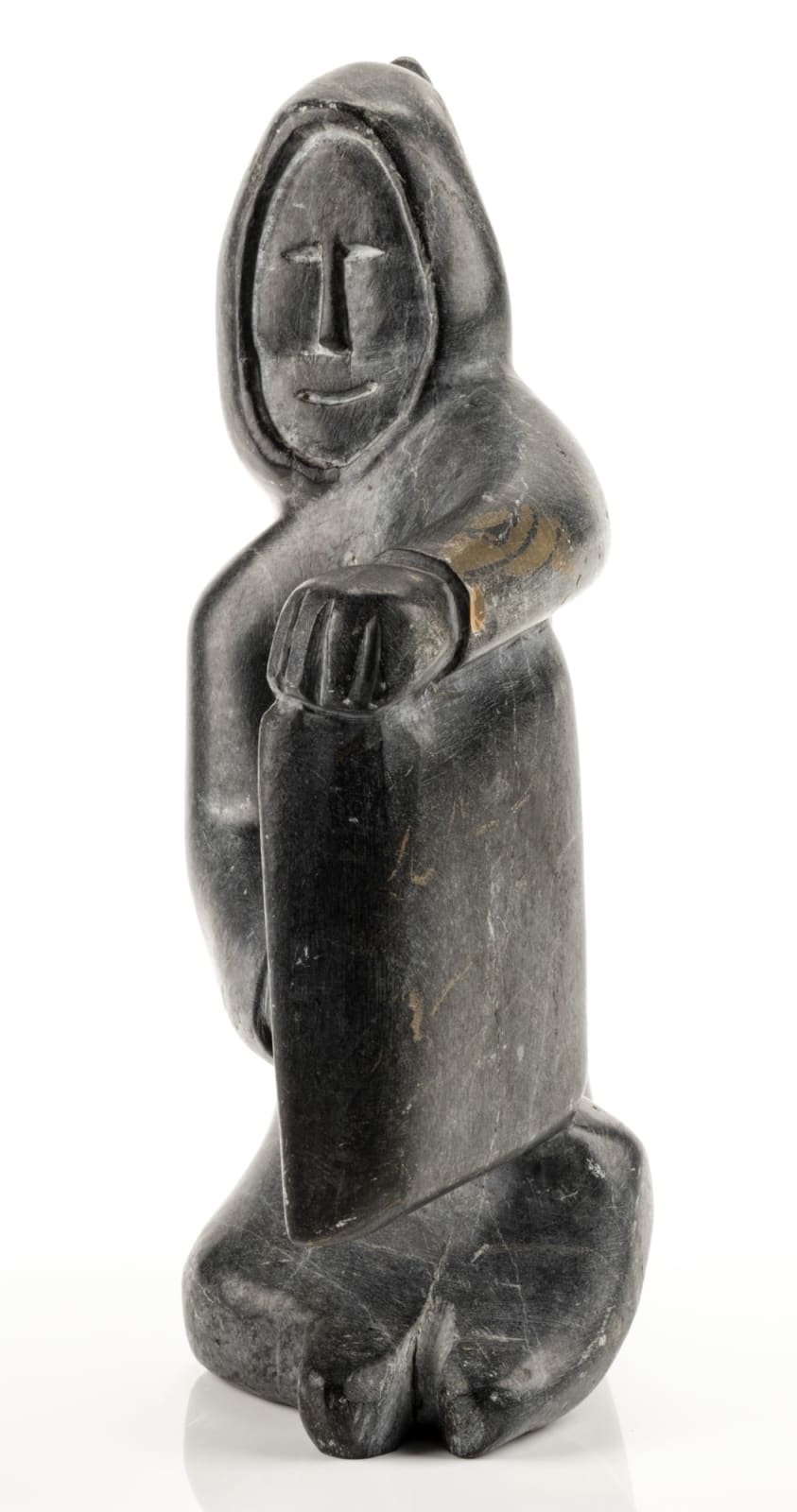-
Artworks
JOHN ATTOK (1906-1980) ARVIAT (ESKIMO POINT)
Man Carving a Soap Dish, c. 1965-70stone and antler, 8 x 6 x 3.5 in (20.3 x 15.2 x 8.9 cm)
apparently unsigned, obscured by igloo tag.LOT 84
ESTIMATE: $2,500 — $3,500
PRICE REALIZED: $2,440.00
9 June 2025Further images
John Attok moved from Whale Cove to Arviat in 1965, continuing to carve even as he began losing his vision by decade’s end. Researcher Diana Trafford observed that his work...John Attok moved from Whale Cove to Arviat in 1965, continuing to carve even as he began losing his vision by decade’s end. Researcher Diana Trafford observed that his work brims with “life, movement and feeling” [1]. This is especially true here, where gesture and mass strike a harmonious chord. The stone figure's overall rounded form is complemented by elongated arms, one of which extends from the body to grip the shallow platter on which he works. The axe is carved in contrasting antler, thus emphasizing the act of creation. A minimalist face, incised and smiling, infuses the composition with a sense of calm purpose.
1. See Bernadette Driscoll, Arviat / Eskimo Point, (Winnipeg Art Gallery, 1983), p. 105.
References: For works by Attok see Bernadette Driscoll, Eskimo Point / Arviat, (Winnipeg: Winnipeg Art Gallery, 1983), cat. nos. 18-23; see also p. 105 for the artist’s bio. Attok’s Mother Nursing Child from 1967 has been reproduced many times including in George Swinton, Sculpture of the Inuit, (Toronto: McClelland & Stewart, 1972/92), fig. 65, p. 46. For what is, in the opinion of the author, one of the most charming works of Inuit art ever created (!) is also by Attok; see Swinton (1972/92), fig. 80, p. 58.Provenance
Private Collection, Toronto;
Estate of the above.
Join our mailing list
* denotes required fields
We will process the personal data you have supplied in accordance with our privacy policy (available on request). You can unsubscribe or change your preferences at any time by clicking the link in our emails.










